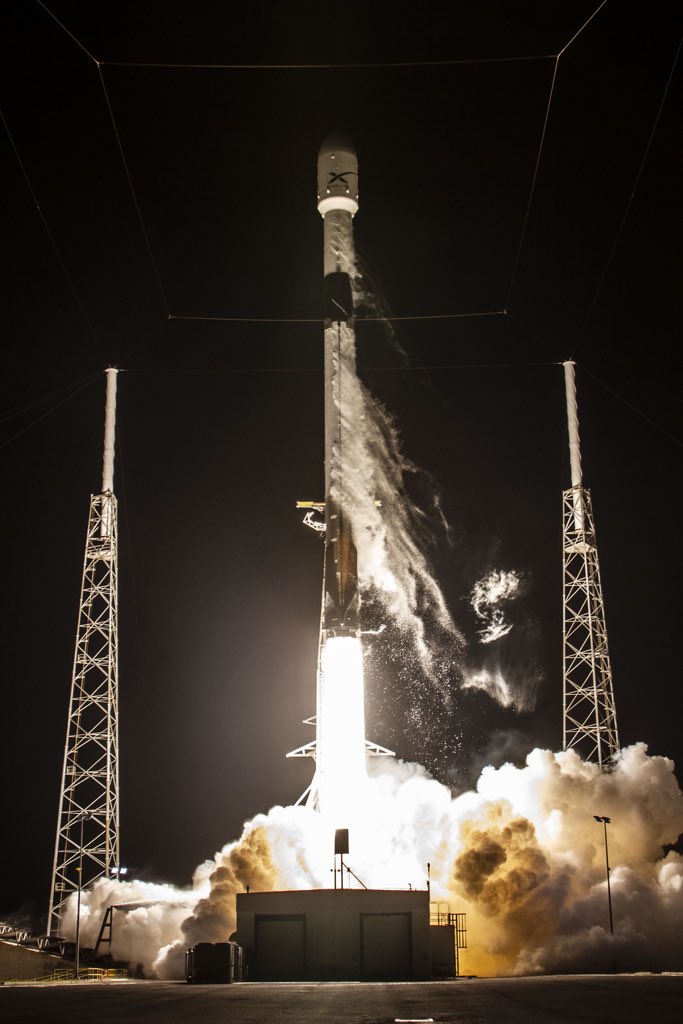The broadband satellite plan of Elon Musk’s SpaceX company has been laid out by senior company executives this week.
The firm intends to launch 24 Starlink missions in 2020 according to Spacenews.com, as part of SpaceX’s strategy to place a total of 12,000 satellites in orbit, with approximately 2,000 satellites launched per year.
The confirmation came from SpaceX President Gwynne Shotwell speaking in Paris.

Starlink launches
It comes after SpaceX successfully launched 60 “Starlink” satellites for its low earth orbit-based broadband project in May this year.
The Falcon 9 rocket carried 60 flat-packed satellites, after it lifted off from Cape Canaveral Air Force Station after the launch had been delayed by heavy winds.
The Falcon 9’s main-stage reusable booster rocket then returned to Earth and landed successfully on a barge floating in the Atlantic ocean.
The 24 Starlink missions in 2020 therefore could theoretically see the addition of 1,440 “Starlink” satellites next year, providing coverage for the southern area of the United States.
Just days after the May launch it was revealed that SpaceX had raised more than $1 billion (£790m) in a six month period to help fund its broadband satellite ambitions.
The satellites are deployed at an altitude of 273 miles, or 440 km, and gradually climb to their operational altitude of 550km.
About 400 satellites are needed for “minor” coverage and 800 for “moderate” coverage.
US regulators have given SpaceX permission to launch nearly 12,000 satellites, compared with a total of only about 2,000 currently in operation worldwide today.
SpaceX has now reportedly asked US regulators for permission to rearrange its planned constellation, in a way that would allow fewer satellites to cover more territory, according to documents filed with the Federal Communications Commission.
Elcon Musk has previously said the service could bring in $30bn to $50bn a year in revenues, far higher than SpaceX’s space launch revenues, which are expected to top out at around $3bn a year.
The company hopes to use the venture to help fund plans to build a reusable Mars rocket called Super Heavy and a 100-person vehicle called Starship.
Rival networks
But SpaceX is not the only player in beginning rolling out satellite-based Internet connectivity.
The other companies racing to construct satellite-based broadband networks include Jeff Bezos’ Blue Origin, which intends to deploy a 3,200-satellite network known as Project Kuiper.
Other players include Kepler, LeoSat and Telesat Canada.
But perhaps the most immediate challenge to SpaceX’s Starlink comes from British start-up OneWeb, which launched its first satellites in February.
In March OneWeb said it had raised a total of $3.4 billion (£2.63bn) in private funding, paving the way for a series of monthly launches this autumn to build an initial network of 650 satellites operating at 1,200km.
In June, the founder and CEO of Amazon, Jeff Bezos, talked about about his Blue Origin plan to deploy a 3,200-satellite network known as Project Kuiper. He said his plan would cost billions of dollars.
What do you know about fibre broadband? Take our quiz!





